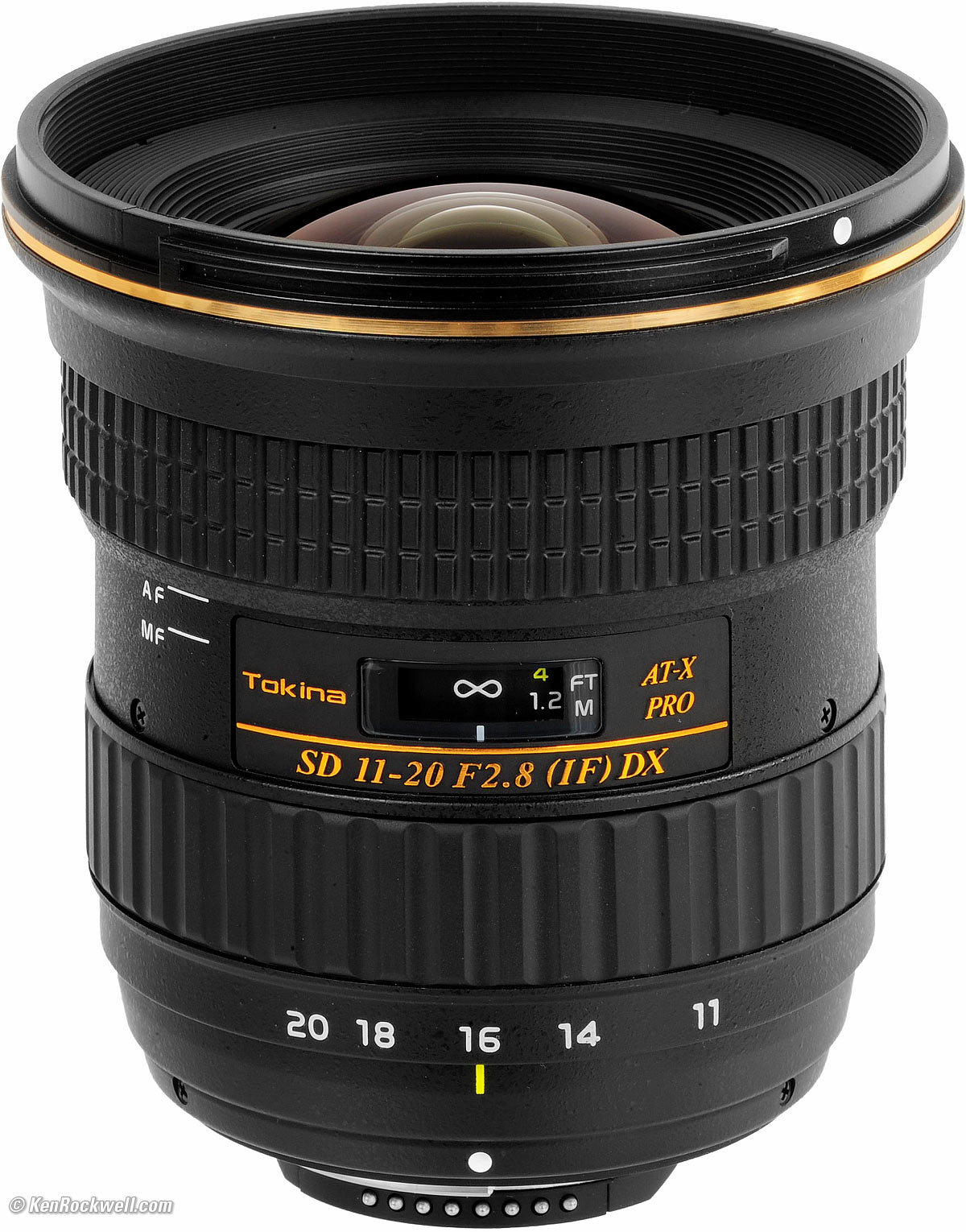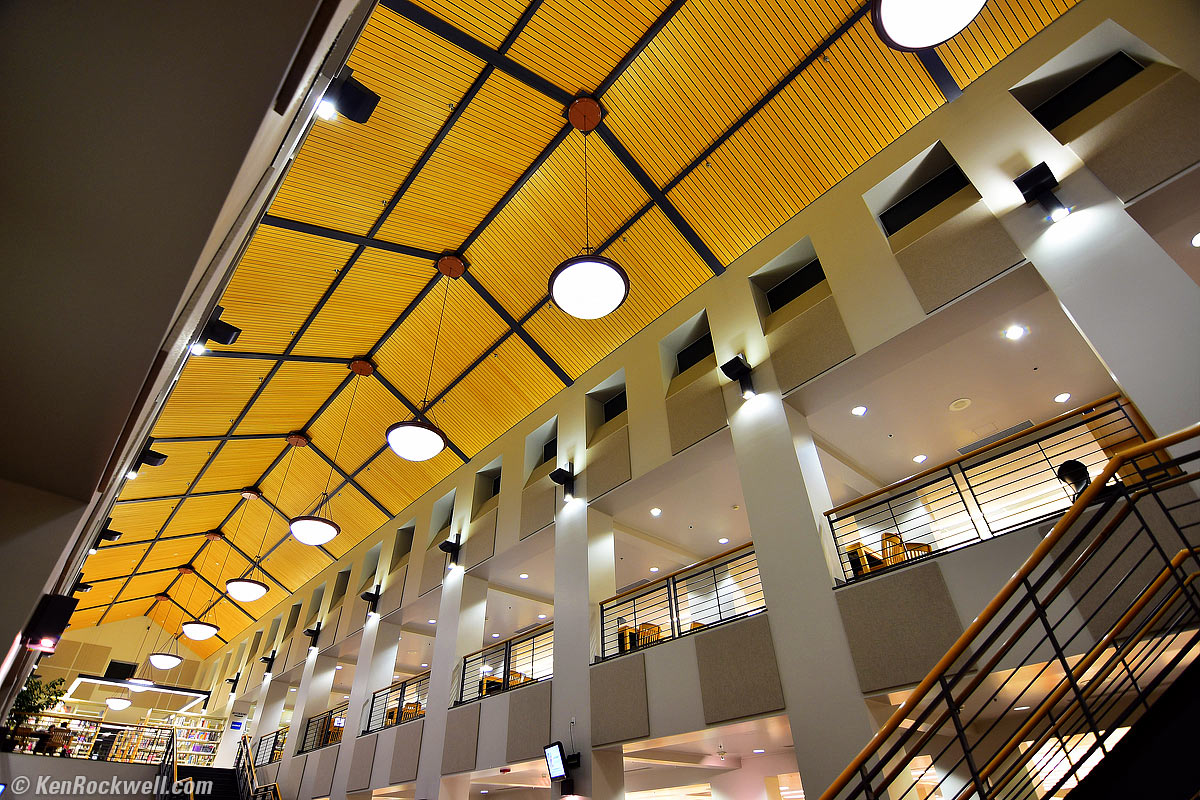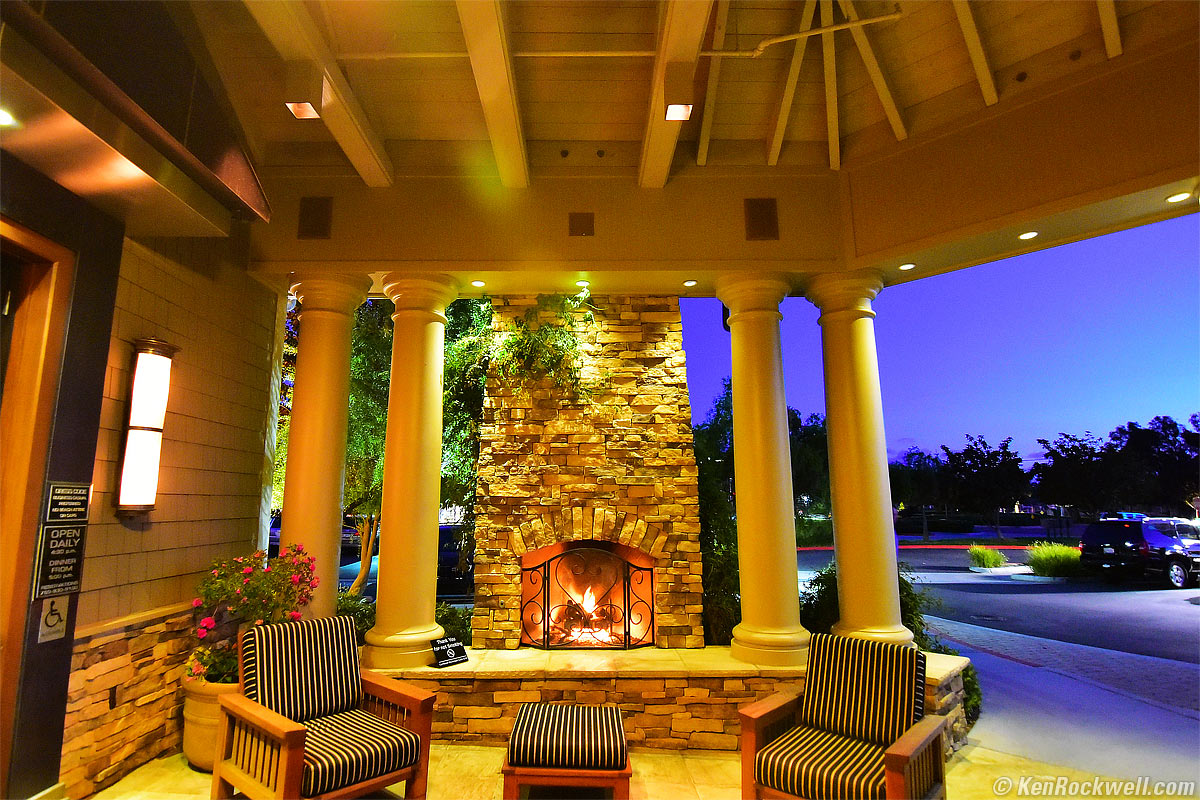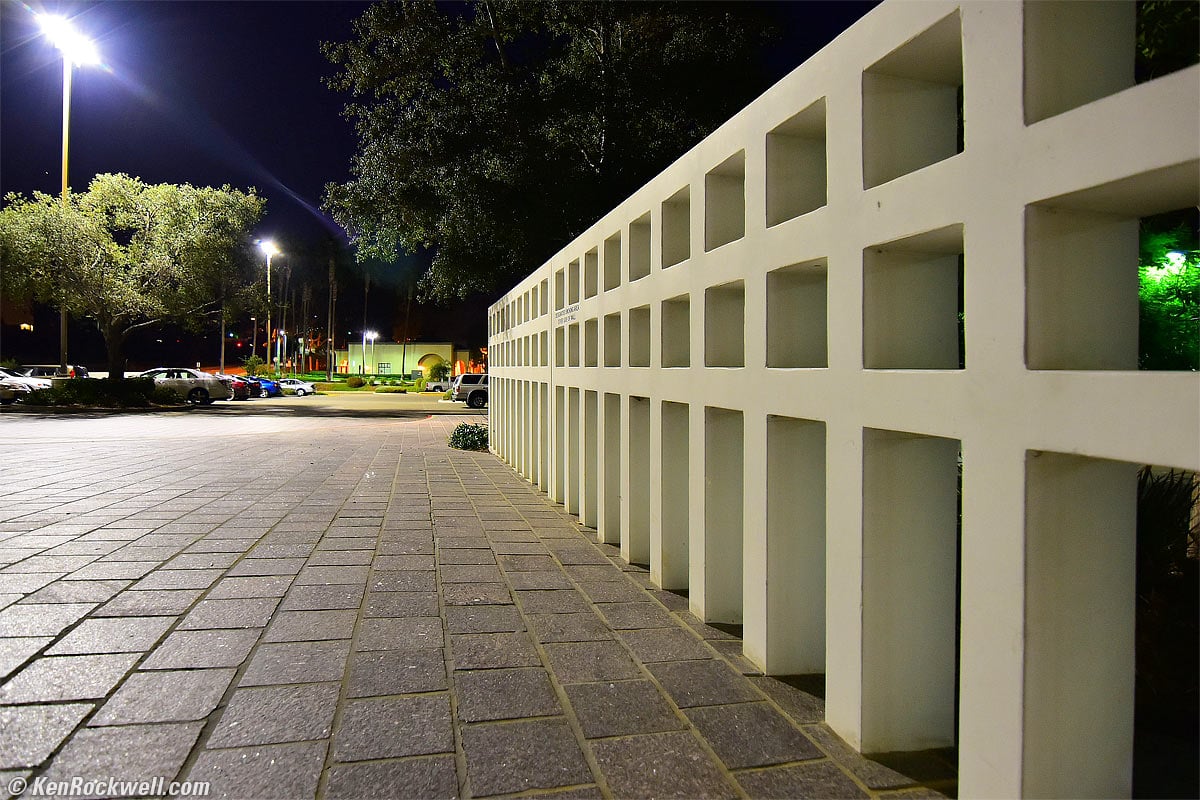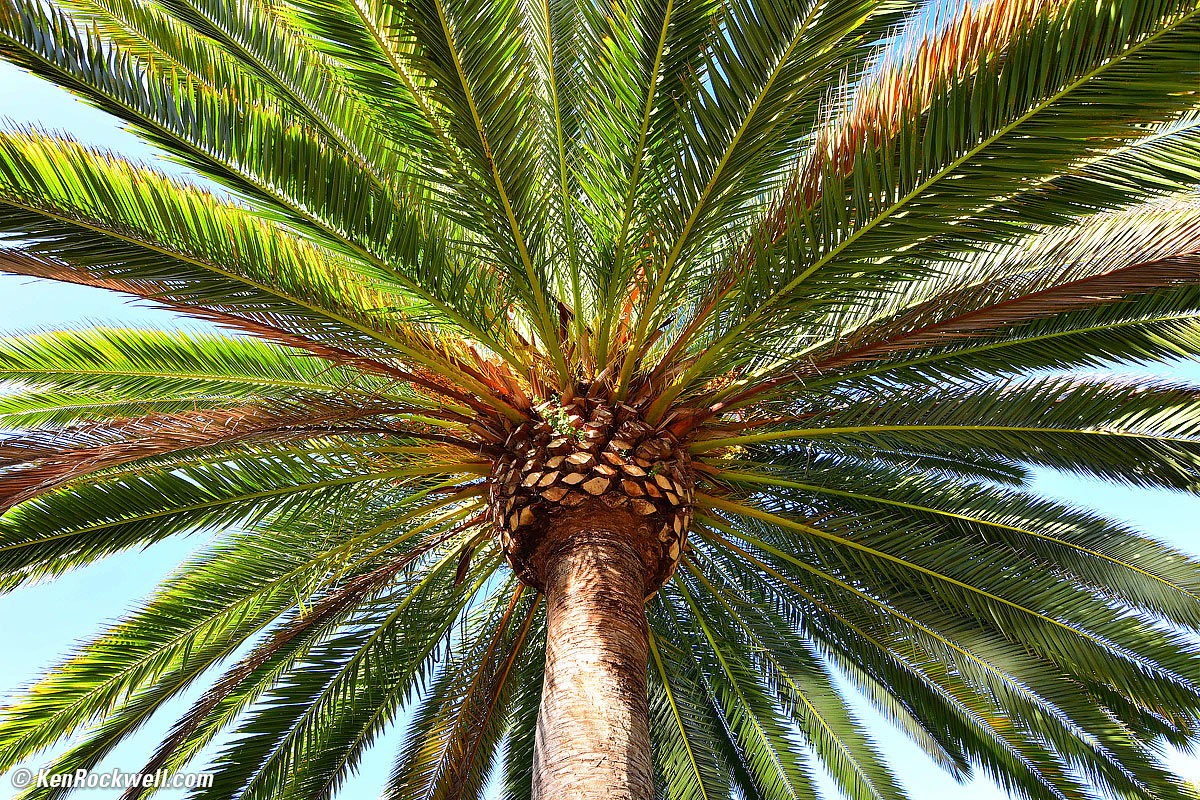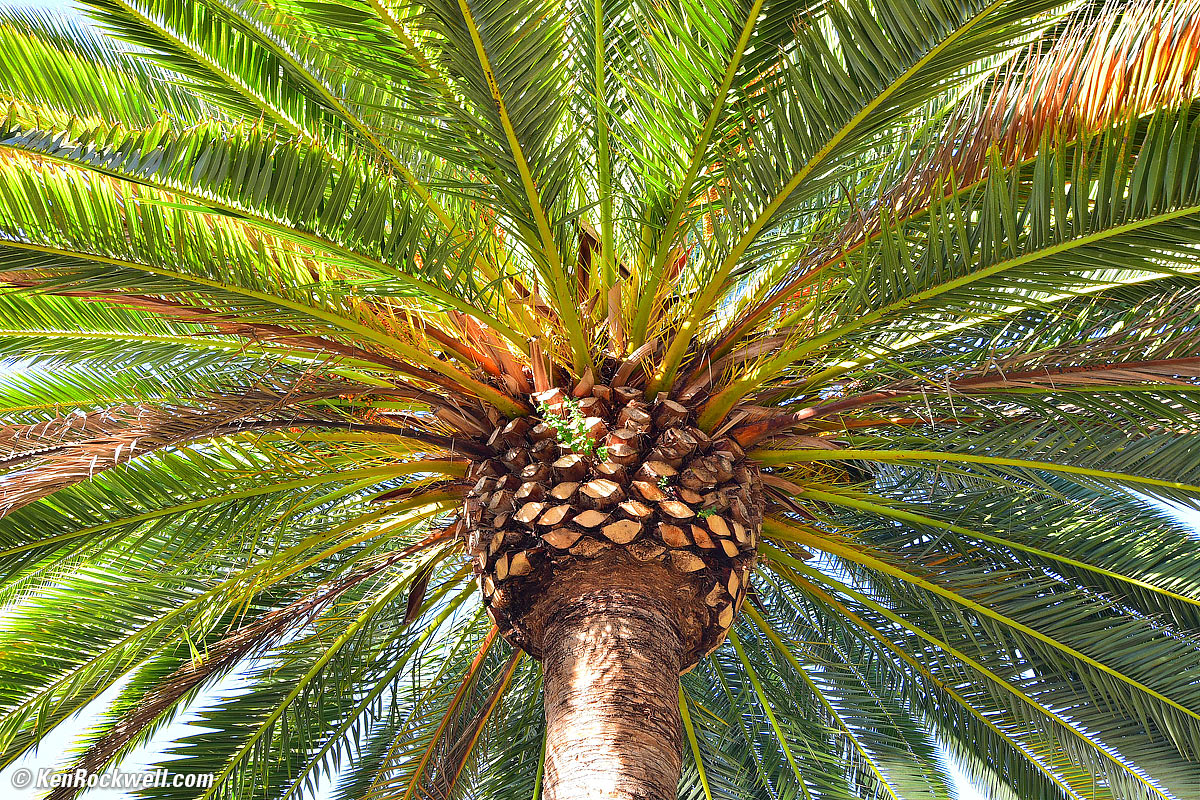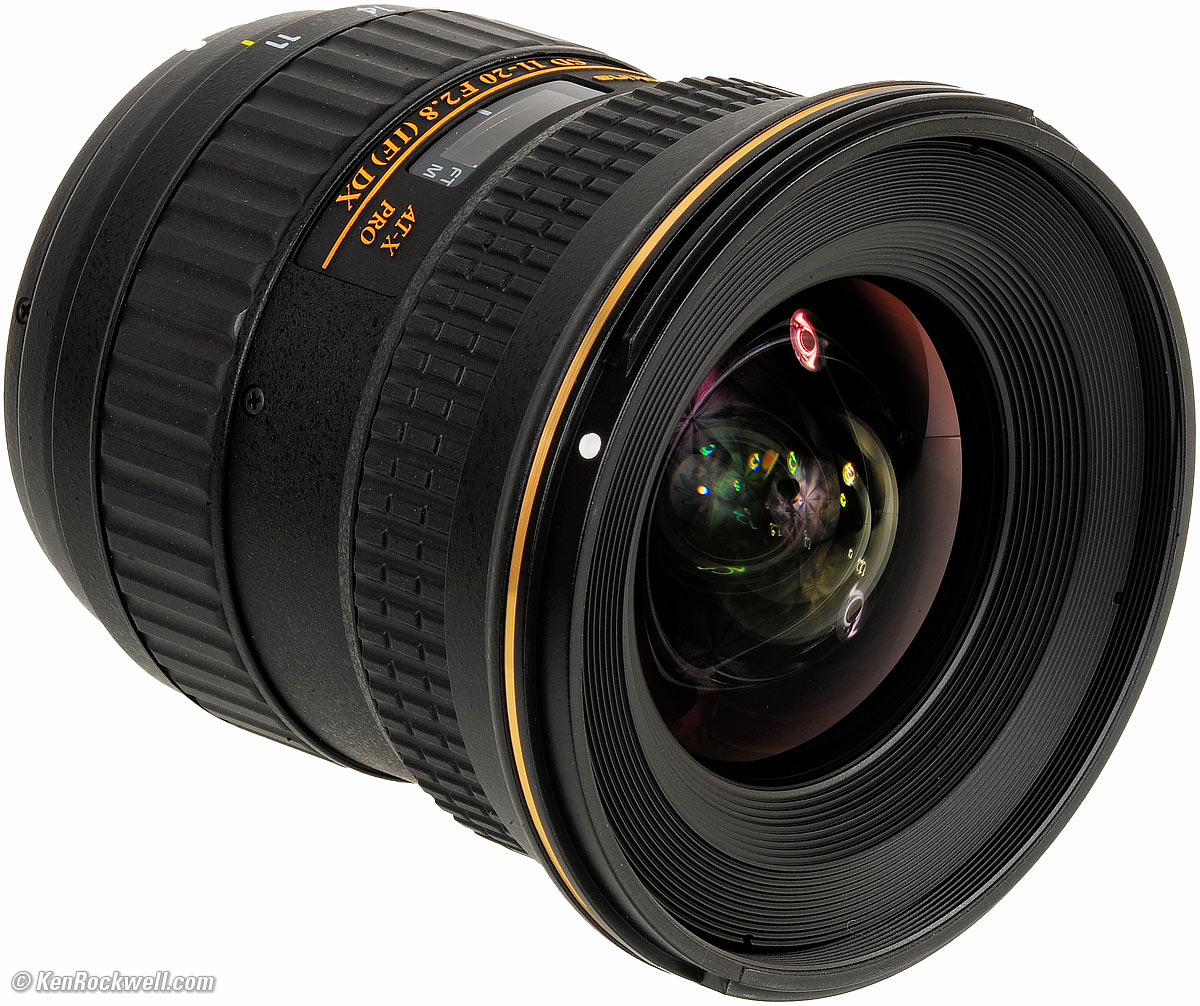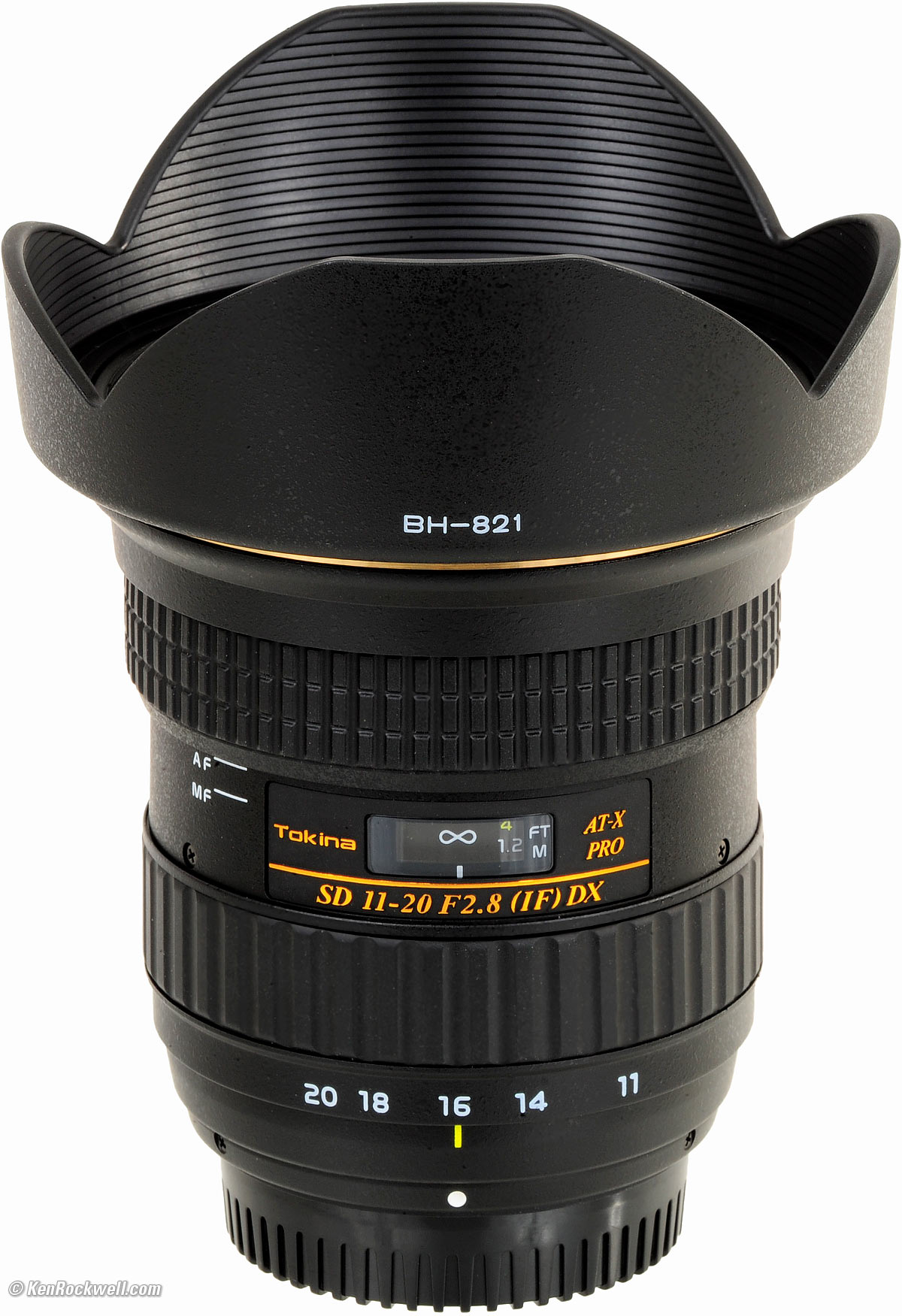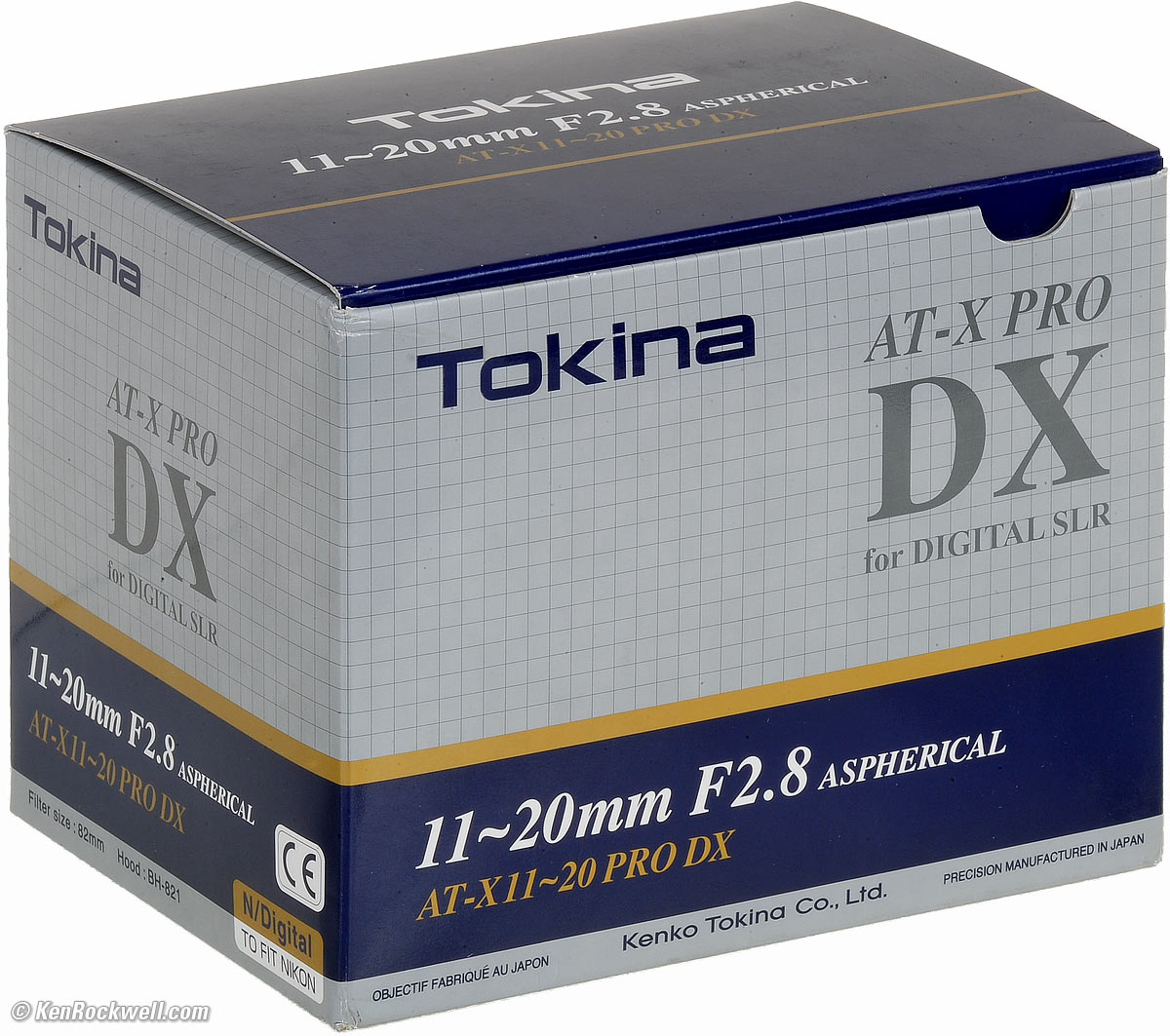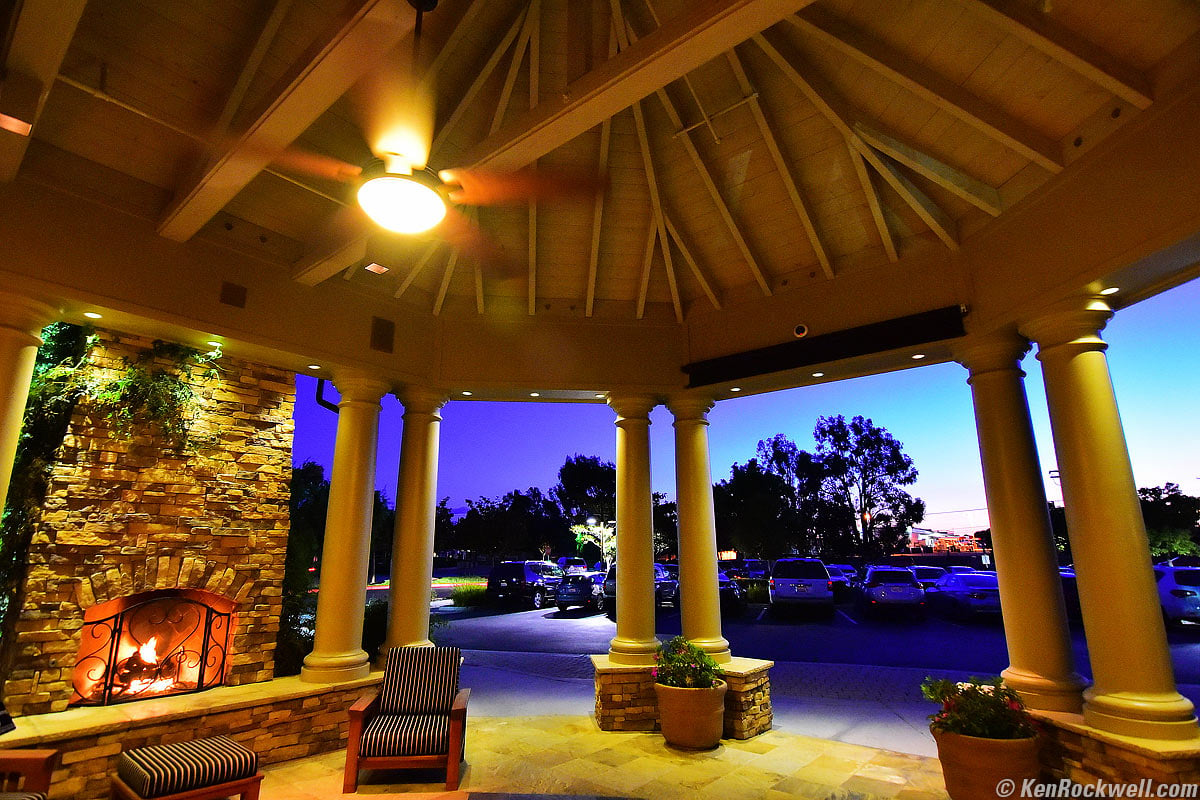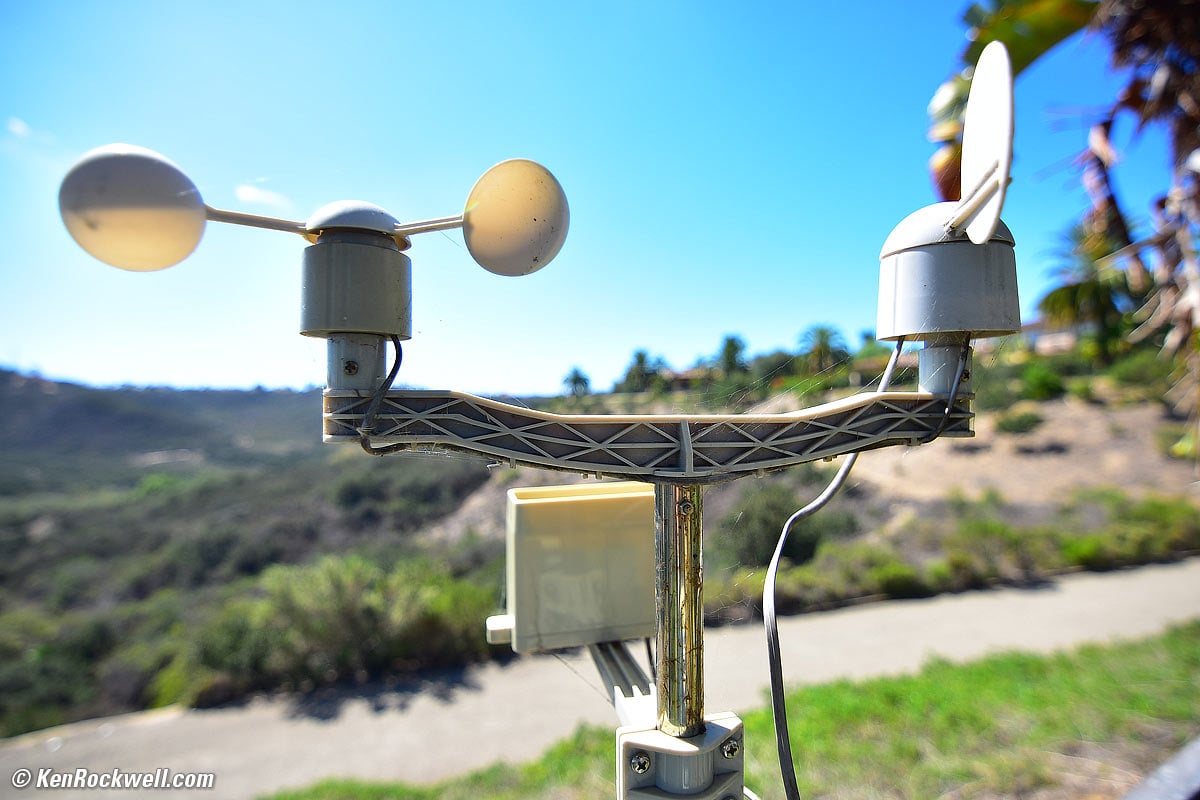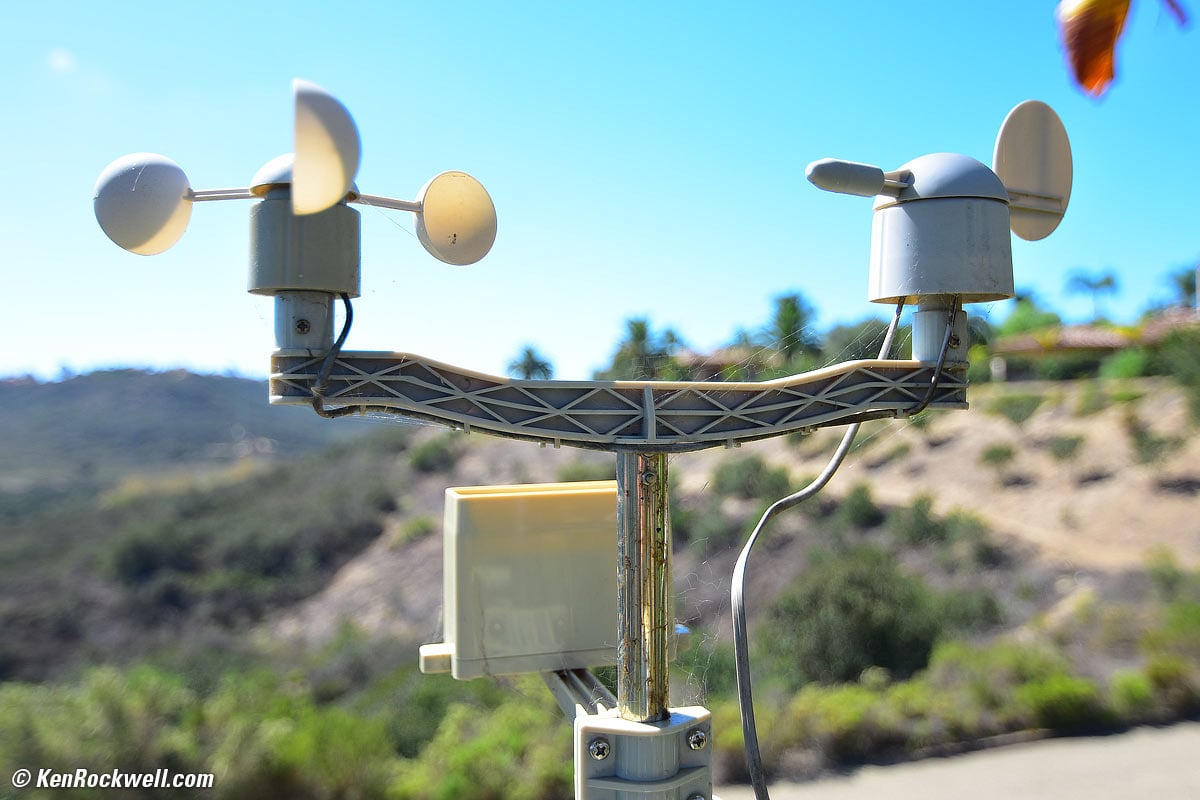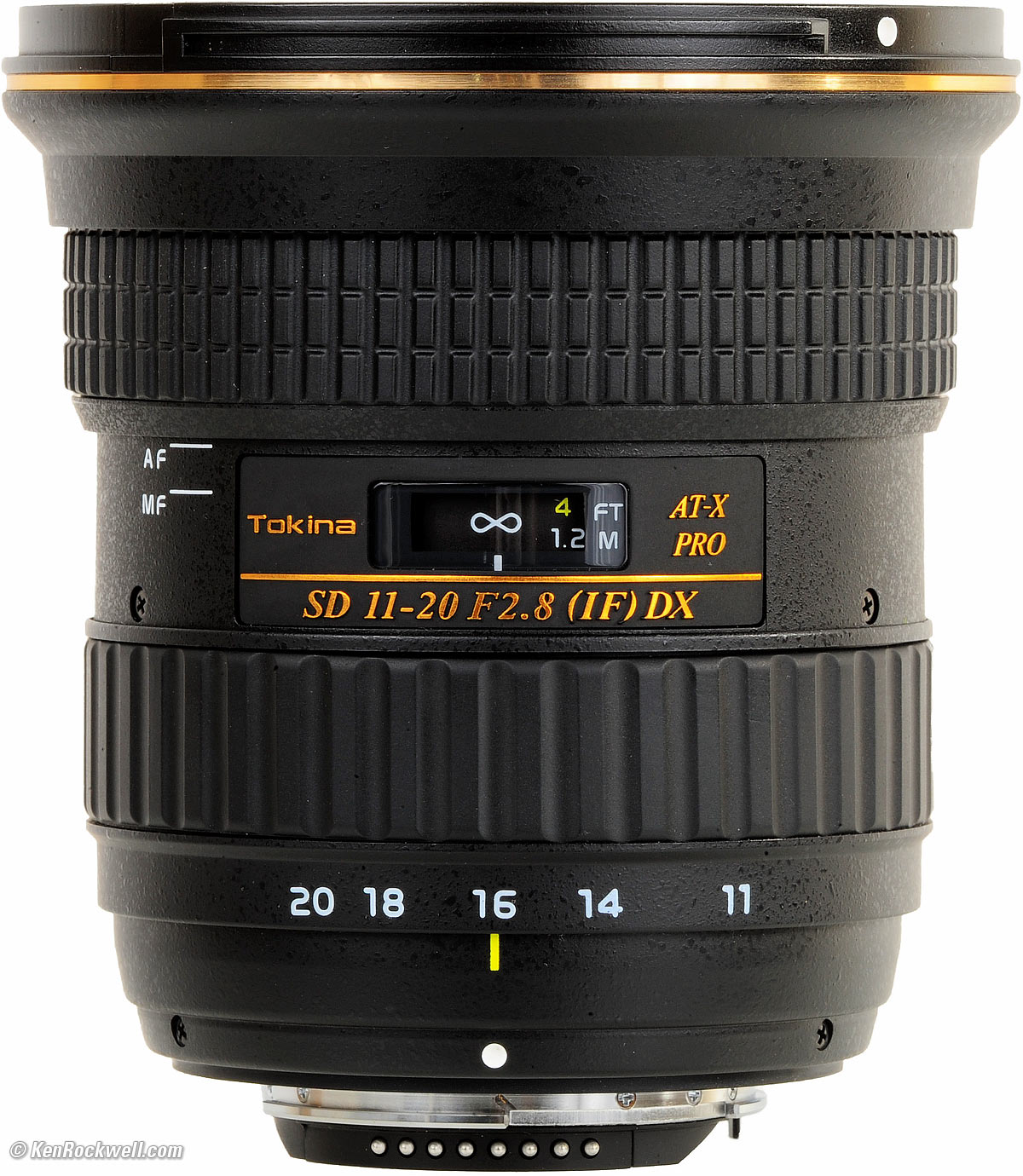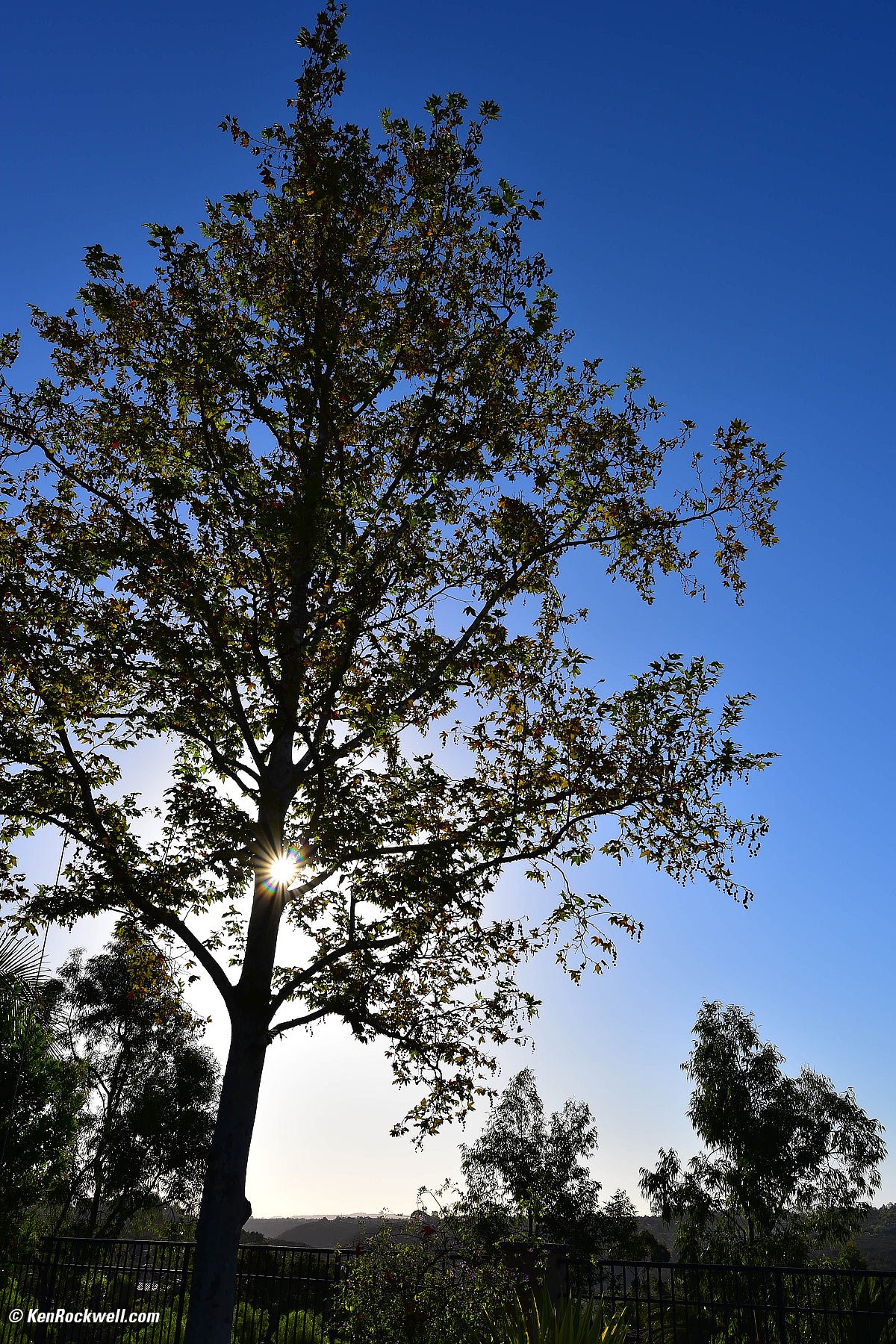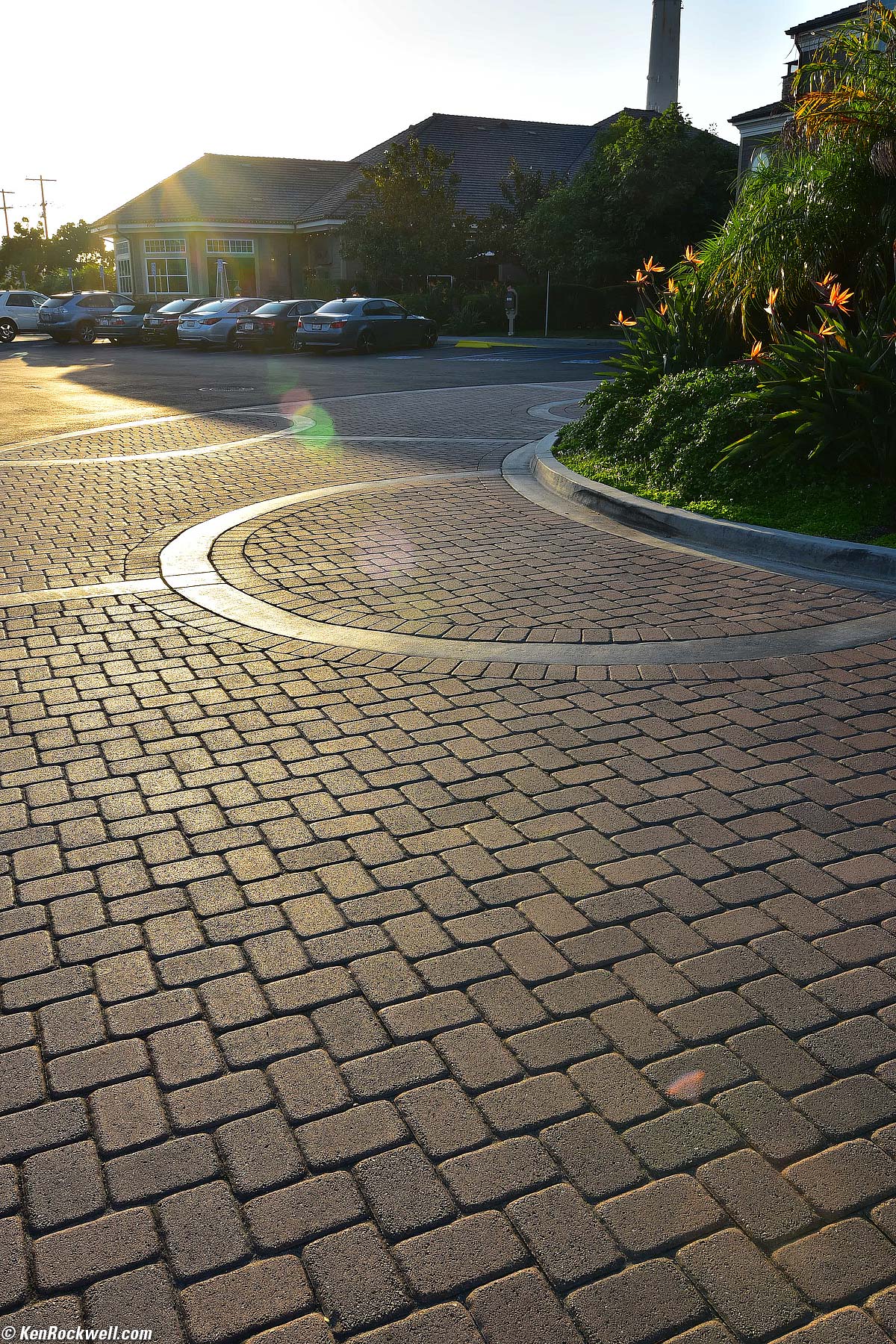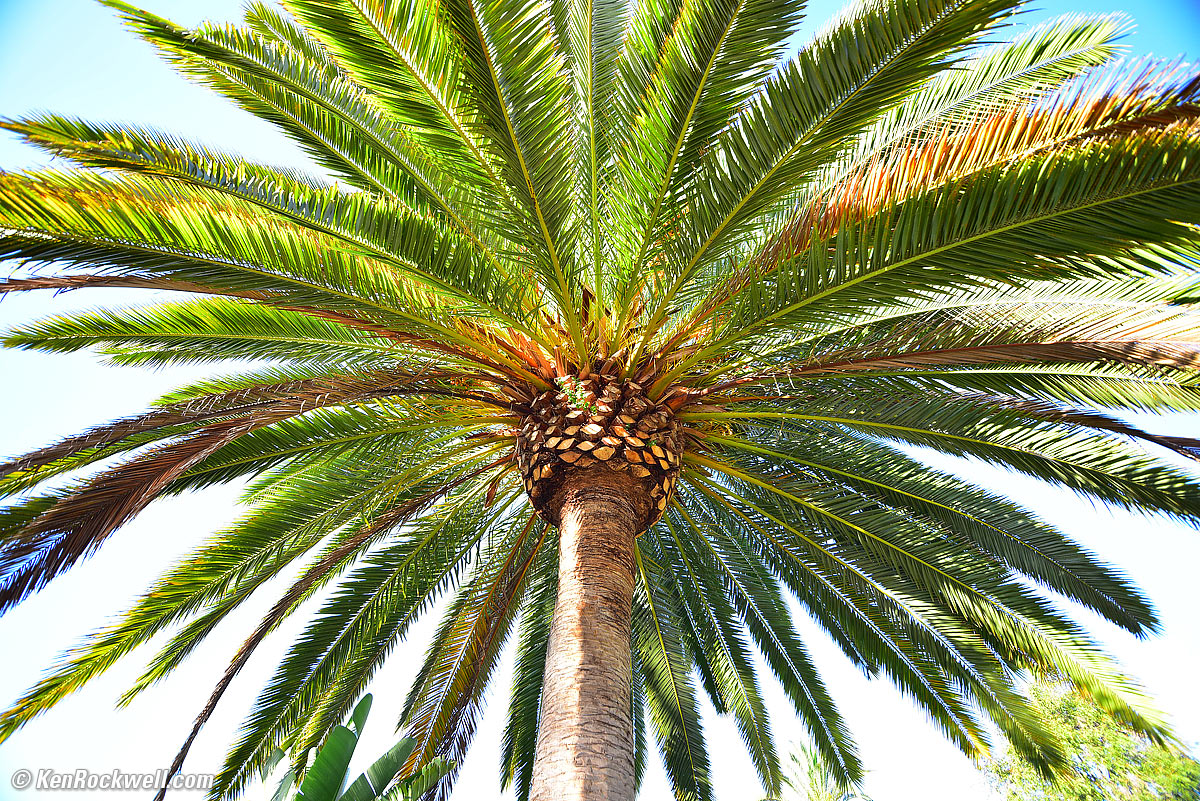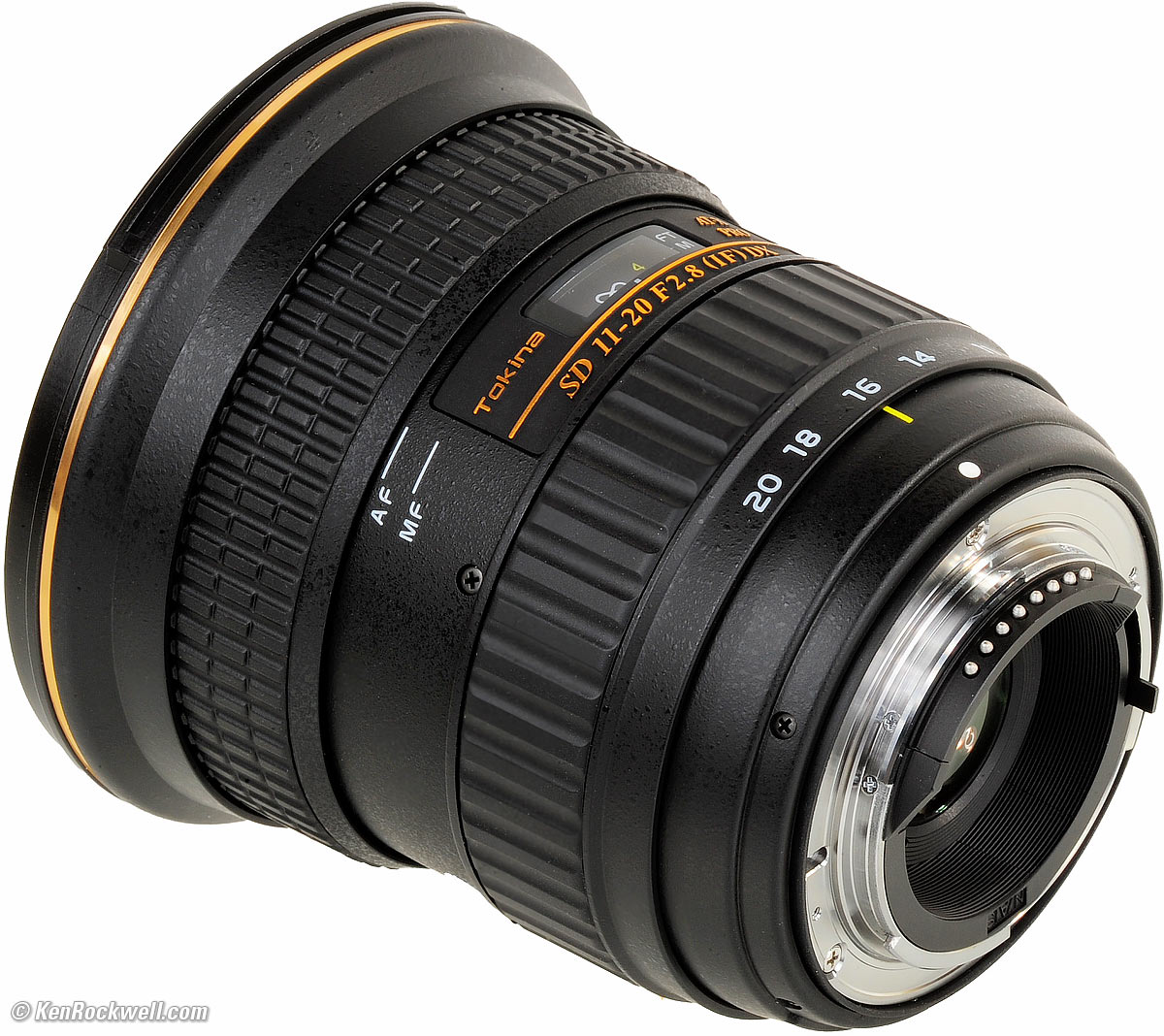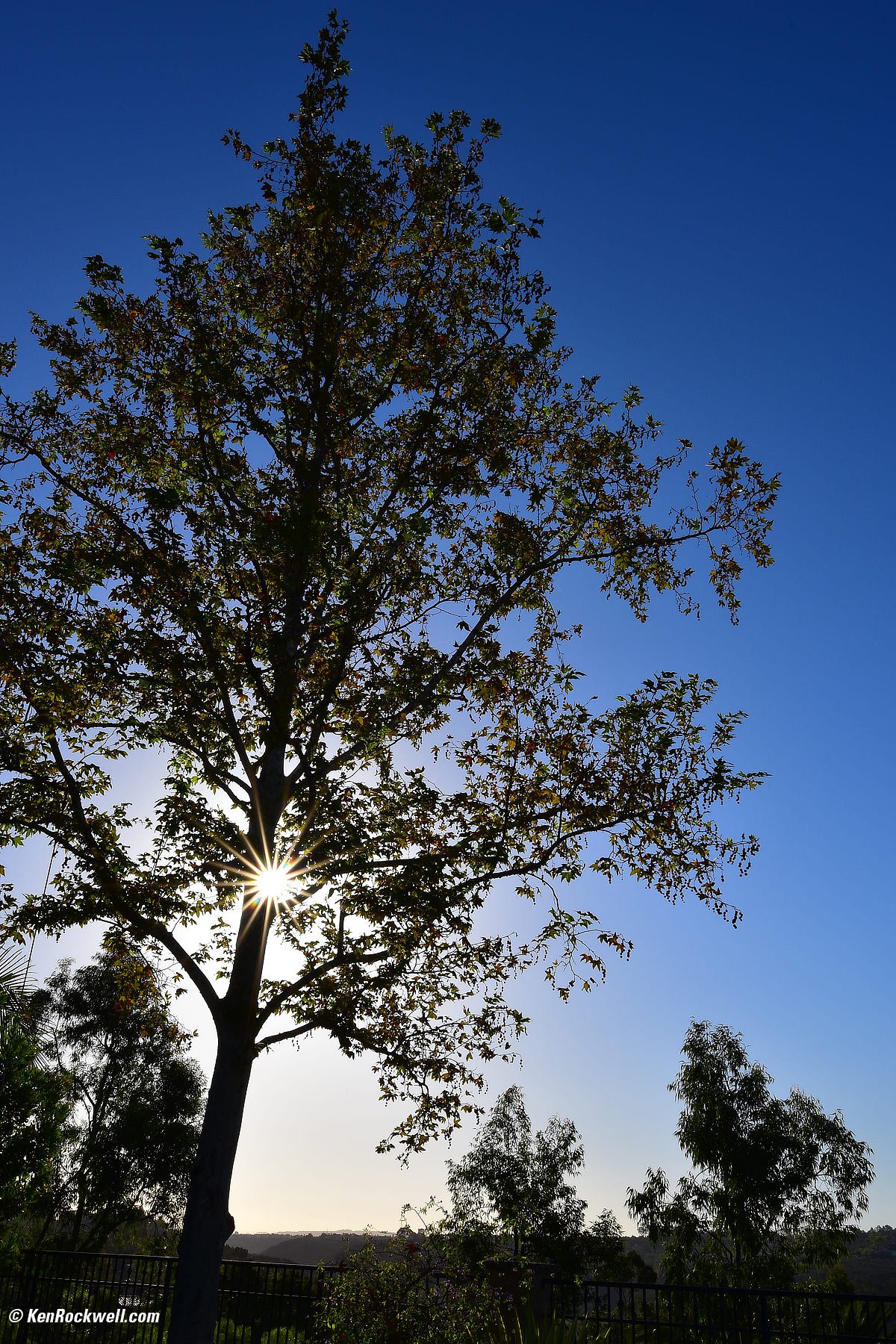Home Donate New Search Gallery Reviews How-To Books Links Workshops About Contact
Tokina 11-20mm f/2.8
Ultrawide APS-C (2015-)
Sample Images Intro Specs Performance
Tokina AT-X 11-20mm f/2.8 PRO DX (in Nikon mount, also comes in Canon mount, APS-C coverage only, 82mm filters, 19.4 oz./550 g, 0.9'/11"/0.28m close focus, about $549). enlarge. I got mine at Adorama; I'd also get it at Amazon or at B&H.
This all-content, junk-free website's biggest source of support is when you use those or any of these links to approved sources when you get anything, regardless of the country in which you live. Tokina's boxes are not sealed in any way, so never buy at retail or any source not on my personally approved list since you'll have no way of knowing if you're missing accessories, getting a defective, store demo, damaged, dropped, returned or used lens. My approved sources ship from remote automated warehouses where no one gets their greasy fingers on your new lens before you do. Buy only from the approved sources I use myself for the best prices, service, return policies and selection. Thanks for helping me help you! Ken.
October 2015 Tokina Nikon Canon Fuji Sony Zeiss All Reviews
Tokina 11-16mm f/2.8 II (2012-)
Tokina 11-16mm f/2.8 (2007-2012)
Tokina 12-28mm f/4 (2013-)
Nikon 10-24mm DX (2009-)
Nikon 12-24mm DX (2003-)
Canon 10-18mm EF-s (2012-)
Canon 10-22mm EF-s (2004-)
Sample Images (more throughout the review) top
Sample Images Intro Specs Performance
Library Interior, 06 October 2015. Nikon D810 in 15 MP DX crop, Tokina AT-X 11-20mm f/2.8 at 11mm, f/2.8 at 1/8 at ISO 200. bigger or camera-original © file to view on your desktop computer.
Boom! Sharp corner-to-corner wide-open at f/2.8 at 11mm. Bam! This performance so much better than a full-frame $3,200 Sony A7R II with a $2,700 LEICA SUPER-ELMAR-M 21mm f/3.4 ASPH on a $270 Novoflex adapter.
West Entrance, 06 October 2015. Nikon D810 in 15 MP DX crop, Tokina AT-X 11-20mm f/2.8 at 11mm, f/4 at 1/15 at AUTO ISO 6,400. bigger.
Library Sculpture, 06 October 2015. Nikon D810 in 15 MP DX crop, Tokina AT-X 11-20mm f/2.8 at 11mm, f/2.8 at 1/15 at AUTO ISO 100. bigger.
Palm, 06 October 2015. Nikon D810 in 15 MP DX crop, Tokina AT-X 11-20mm f/2.8 at 11mm, f/8 at 1/30 at AUTO ISO 100. bigger or camera-original © file to view on your desktop computer.
Palm, 06 October 2015. Nikon D810 in 15 MP DX crop, Tokina AT-X 11-20mm f/2.8 at 11mm, f/8 at 1/30 at AUTO ISO 100. bigger or camera-original © file to view on your desktop computer.
Introduction top
Sample Images Intro Specs Performance
This Tokina 11-20mm f/2.8 is a tough, well-made lens with excellent optical quality. It costs less than any of Nikon's DX ultrawides, is built tougher, is just as sharp, is a stop faster and costs less. Get it.
It also works great on full frame from as wide as 16mm.
This new 11-20mm lens (2015-) replaces the previous Tokina 11-16mm f/2.8 II (2012-2015) which replaced the first Tokina 11-16mm f/2.8 (2007-2012). These are all good lenses, and this newest one covers a broader zoom range and sells for the same price as the older ones.
The Tokina 11-20mm is as good optically as Nikon and Canon's lenses, and it's faster (f/2.8) and much tougher.
For Canon I'd get the superb Canon 10-18mm EF-s which is at least as good optically for half the price, although the Canon 10-18mm is a very light-duty plastic lens — with superb optics.
This is an APS-C lens, but it works fine on full-frame and 35mm film from 16mm to 20mm.
It works great with every camera I tried it. The risk you take with this off-brand lens is that ten years from now it might or might not be compatible with a new Nikon or Canon, since Nikon and Canon don't ensure that their new designs are backwards compatible with third-party lenses as they do for their own lenses.
I haven't tried this lens on every camera personally; there is the possibility of problems, but no worries, get yours from any of my personally approved sources and they'll return your money if you just don't like it for any reason.
Nikon
Everything should work perfectly on every digital Nikon ever made, both FX and DX, from the best Df, D4s, D810, D750 and D610 to Nikon's cheapest digitals like the D40, D40x, D60, D3000, D3100, D3200, D3300, D5000, D5100, D5200, D5300 and D5500.
If shot on full-frame your camera should switch into DX mode. You can shoot it in full-frame mode between 16mm and 20mm, but the corners will be dark and cut-off between 11mm and 15mm unless you switch Image Area to DX.
Canon
As an EF-s compatible lens, it should work on every Canon APS-C camera, except possibly the very earliest D30 from 2000, the D60 from 2002 and the 10D from 2003.
Specifications top
Sample Images Intro Specs Performance
Tokina 11-20/2.8. bigger.
Name
Kenko Tokina calls this the Tokina AT-X 11-20mm f/2.8 PRO DX (IF) SD.
AT-X: Advanced Technology-seX.
PRO: Push-pull mechanical clutch mechanism on the focus ring to swap between auto and manual focus.
DX: Covers only APS-C cameras. It will cut off the picture edges if shot on full frame or 35mm film at settings wider than 16mm.
IF: Internal focus; nothing moves externally as focussed.
SD: Super-low Dispersion glass for less secondary chromatic aberration.
Optics top

Tokina 11-20mm f/2.8 Construction.
14 elements in 12 groups.
Three aspherical elements.
Three ED (a.k.a. UD or SD) glass elements.
Internal focus: nothing moves externally as autofocused.
Zooms inside the barrel. Nothing moves externally as moved, but the front and rear groups do move in and out as protected by the barrel.
Multicoated.
Focal Length top
11 ~ 20mm.
It works on full-frame from 16mm to 20mm.
On Nikon DX it will see angles-of-view similar to what a 17 ~ 30mm lens would see on a 35mm or full-frame camera.
On 1.3x Canon cameras it will see angles-of-view similar to what a 16 ~ 25mm lens would see on a 35mm or full-frame camera. (You can zoom wider than a 16mm equivalent, but your corners will cut off.
On 1.6x Canon cameras it will see angles-of-view similar to what an 18 ~ 32mm lens would see on a 35mm or full-frame camera.
Angle of View
104.3º ~ 72.4º diagonal on Nikon DX.
A little less on Canon APS-C.
Close Focus top
0.9 feet (11" or 0.28m), specified, from the image plane.
Since this lens is so big, this actually means that it focuses to within a few inches of the front of the lens.
Maximum Reproduction Ratio top
1:8.62 (0.12x).
Minimum Field Size top
5.43 x 8.15" (134 x 207 mm).
Diaphragm top
11-20mm f/2.8 at f/22 at 20mm. bigger.
9 rounded blades.
Reasonably round at large apertures to about f/4, and relatively straight-sided (nonagonal) from about f/8.
Stops down to f/22.
Hard Infinity Focus Stop? top
No.
You have to let the AF system focus for you at infinity.
Focus Scale top
Yes.
The ring turns from infinity to the closest focus distance in about 80.º
Depth-of-Field Scale top
No.
Infra-Red Focus Indices top
No.
Filter Thread top
82mm.
Plastic.
Doesn't move, ever.
Size top
3.50" (89.0mm) diameter by 3.62" (92.0mm) long.
No change as zoomed.
Weight top
19.408 oz. (550.2 g), measured.
Tokina specifies 19.8 oz. (560 g).
Hood top
Tokina 11-20/2.8 with included BH-822 hood. bigger.
Tough plastic BH-821 bayonet hood, included.
Case top
None included.
Caps top
82mm front cap.
EOS or Nikon F rear cap.
Introduced top
Announced 24 December 2014 in Japan.
Announced for USA on 20 February 2015.
Quality top
Made in Japan.
JAN Codes top
Nikon: 4961607634387.
Canon: 4961607634394.
Price, USA top
October 2015: $549 (¥ 100,000 list price in Japan).
Box, Tokina 11-20/2.8. bigger.
Performance top
Sample Images Intro Specs Performance
Overall Autofocus Bokeh Breathing
Distortion Ergonomics Eyeblow Falloff
Filters Flare & Ghosts Full-Frame Use
Lateral Color Fringes Macro Mechanics
Sharpness Spherochromatism Sunstars
Overall performance top
This Tokina 11-20mm f/2.8 is optically superb, it's built tougher than any Nikon or Canon APS-C ultrawide, and it's faster. Enough said?
West Entrance, 06 October 2015. Nikon D810 in 15 MP DX crop, Tokina AT-X 11-20mm f/2.8 at 11mm, f/4 at 1/15 at AUTO ISO 5,600. bigger.
Autofocus performance top
Autofocus is reasonably fast. You can hear a small motor running while it works.
Canon and Nikon's similar lenses focus nearly silently.
Auto/Manual Switching
Just grab the focus ring and push or pull it to swap between auto and manual focus.
There is no instant override; you have to pull the ring towards you and let it click-in to get into manual mode.
AF Speed
AF speed is swell.
An electric motor drives autofocus. You will usually hear it when it runs.
AF Accuracy and Consistency
I saw no autofocus error on my Nikon D810, used in DX mode.
Especially at f/2.8, every shot is dead-on at every focal length.
Yes! Perfection!
Focus with zooming
Focus stays unchanged as zoomed.
Samples will vary.
Manual Focus
Manual focus is easy; just pull the ring towards you until it clicks.
Better than Tokina's older lenses with this feature, you don't have to align anything as you move it forward or back. 80% of the time it works perfectly, the other 20% sometimes you have to jiggle it a little bit to get it to go all the way.
It takes 80º to go from end-to-end of the focus scale, so manual focus is fast and precise.
Bokeh performance top
Bokeh, the quality of out-of-focus areas as opposed to the degree of defocus, is only fair.
That's fine because the background almost never gets out of focus unless you're shooting super close.
Here are samples from very close:
At 11mm and f/2.8. bigger or camera-original © file.
At 11mm and f/2.8. bigger or camera-original © file.
Focus Breathing performance top
Focus breathing (the image changing size as focused) is mostly of interest to cinematographers who don't want the image changing size ("breathing") as the lens is focused among different subjects.
The image from the Tokina 11-20mm f/2.8 gets slightly smaller as focused more closely, at all focal length settings.
Distortion performance top
The Tokina 11-20mm f/2.8 has strong barrel distortion at the 11mm end, and none at the 20mm end.
Luckily it's all first-order and very easy to correct completely with these values in Photoshop's Lens Distortion tool:
at 3m (10') |
|
11mm |
+4.0 |
14mm |
+2.0 |
16mm |
+1.0 |
18mm |
0.0 |
20mm |
0.0 |
© 2015 KenRockwell.com. All rights reserved.
Ergonomics performance top
Tokina 11-20/2.8. bigger.
Overall
This is a nice, tough lens you don't have to baby. It's not plastic rubbish from China.
Focus
The focus rings of the Nikon and Canon versions turn in different directions, the same as they do on Nikon or Canon's own lenses.
There is no AF-MF switch; you swap between modes by moving the focus ring forward and back.
Sometimes it takes some jiggling to get it to click into manual mode; Canon and Nikon's native systems are easier.
Zooming
The zoom rings of the Nikon and Canon versions turn in different directions, the same as they do on Nikon or Canon's own lenses.
Zoom is stiff, ideally use two fingers.
It's easy to set precise framing, but slower if you want to flick in and out quickly.
Eyeblow performance top
As a "pumper" zoom that pumps in and out as zoomed, the air has to come and go somewhere.
Yes, like many zooms, this does pull air through your camera and possibly the viewfinder.
Air pumps through the back of this lens, but I don't feel any eyeblow on my Nikon D810 (used in DX mode).
Falloff (darkened corners) performance top
Falloff is completely invisible, except for the slightest at 11mm at f/2.8.
This is great, especially because there are no lens profiles available to correct this lens.
I've greatly exaggerated this by shooting a flat gray target and presenting it against a gray background:
Tokina 11-20mm f/2.8 falloff on full-frame
© 2015 KenRockwell.com. All rights reserved.
|
Filters, Use with performance top
You don't need expensive "thin" polarizers or grads, unless you want to stack them. Even at 11mm a regular fat filter works without vignetting.
Flare and Ghosts performance top
Flare and ghosts are extremely well controlled:
At 20mm at f/8. bigger.
I can't see any ghosts in casual use.
This is as bad as I can make it look, and this is with a single-coated filter on the lens:
West Motorcourt, 06 October 2015. Nikon D810 in 15 MP DX crop, Tokina AT-X 11-20mm f/2.8 at 20mm, f/11 at 1/125 at Auto ISO 100. bigger or camera-original © file to view on your desktop computer.
Sharp, eh?
Full Frame, use on performance top
Palm, 06 October 2015. Nikon D810 in 36 MP full-frame mode, Tokina AT-X 11-20mm f/2.8 at 15.5mm, f/4 at 1/60 at AUTO ISO 100. bigger or camera-original © file to view on your desktop computer.
With no filter, it works as wide as 15.5mm on full-frame. If you set your full-frame crop to 4:5, it works as wide as 15mm without vignetting. With a filter, you won't be able to zoom quite as wide.
It may not be as sharp in the corners as it is on DX, but considering it's not supposed to be able to work at all on full frame, I'd say we're ahead of the game. This Tokina can work extremely will on full frame from 16 ~ 20mm, even wide-open.
Distortion is also just as well controlled on full-frame as it is on DX.
Bravo!
Lateral Color Fringes performance top
I see no color fringes on a Nikon D810, which corrects them automatically for all lenses.
I can't vouch for Canon; I didn't try that version.
Macro performance top
It's an ultrawide. It focuses to within inches of the front of the lens, but it only looks his close:
Mondaine A1323034811SBB at close-focus distance at 20mm on DX. bigger.
It's super-duper sharp at normal apertures; here's a crop at 100% from a 15 MP image:
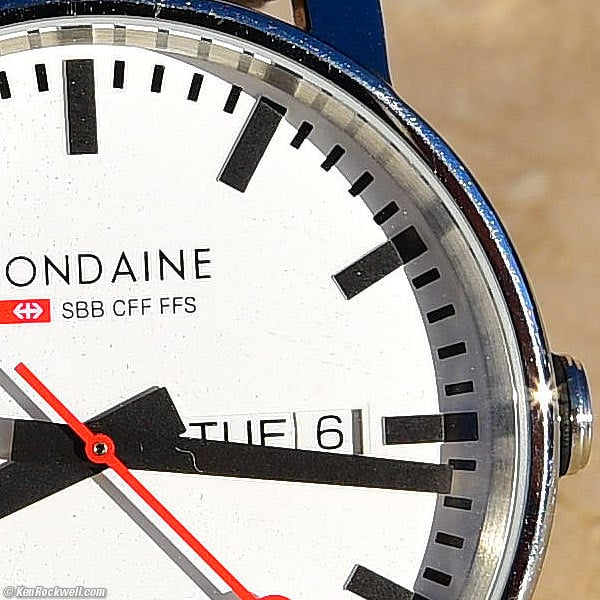
Crop from above image at 100%, shot at f/8 at ISO 100. If this is 6" (15cm) wide on your screen, the full image would print at 32 x 48" (2.7 x 4 feet or 80 x 120 cm)!
If you push it and shoot at f/2.8, the image is sharp, but lower in contrast due to spherical aberration. If you want macro at f/2.8, use the superb Tokina 100mm macro, not this lens.
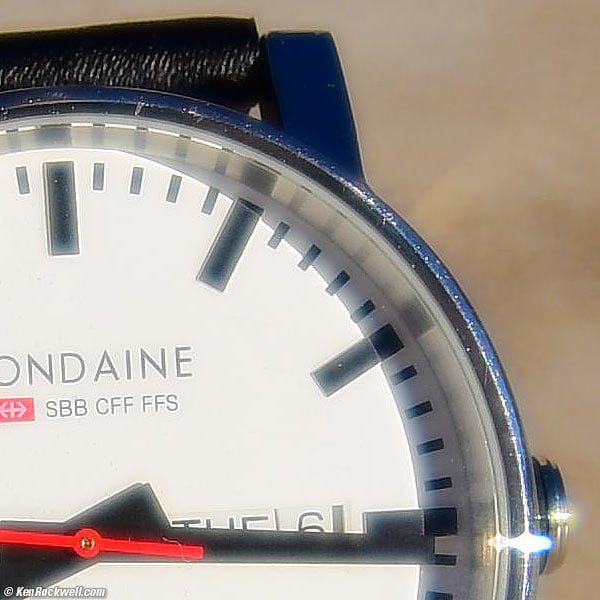
Crop from similar image at 100%, shot at f/2.8 at ISO 100. If this is 6" (15cm) wide on your screen, the full image would print at 32 x 48" (2.7 x 4 feet or 80 x 120 cm)!
Mechanics performance top
Rear, Tokina 11-20 f/2.8. enlarge.
This Tokina is tougher than any APS-C ultrawide from Canon or Nikon; it's mostly metal on the inside.
Filter Threads
Plastic.
Fore Barrel
Plastic.
Hood Mount
Plastic.
Focus Ring
Metal, rubber-covered.
Mid-barrel
Plastic.
Identity
Plate below the focus window.
Internals
Look like all metal.
Zoom Ring
Plastic, rubber-covered.
Rear barrel
Plastic.
Dust seal at mount
Yes, but it's positioned in such a way that it doesn't seal anything on Nikon.
Mount
Chromed metal.
Markings
Paint.
Serial Number
Printed on a sticker stuck in a recess on the bottom of the plastic lens barrel.
Date Code
None found.
Noises When Shaken
Moderate clinking.
Made in
Japan.
Sharpness performance top
Warning 1: Image sharpness depends more on you than your lens.
Warning 2: Lens sharpness doesn't mean much to good photographers.
While amateurs waste time worrying about lens sharpness, pros know that lens sharpness has little to do with making sharp pictures.
This said, the Tokina 11-20/2.8 is super sharp, even wide-open at f/2.8.
So long as you're in focus, sharpness doesn't vary much from perfection, except by f/11, where diffraction softens the image. In the far corners at f/2.8 at the wide end it's just a little less sharp.
Hey, sorry to spare you endless boring charts, but with a lens this good, there's nothing to show other than sharp pictures under all conditions.
The biggest detriment to sharpness will be a lack of proper vision and technique, never this lens. I bought mine directly from Adorama. I can't vouch for anything if you buy from a local store or chain where you never really know who's opened and played with your lens before you buy it. I never buy retail; too many risks, so why pay more? Get yours only from my approved sources who ship from secure remote warehouses, otherwise since Tokina doesn't seal its boxes in any way, you have no idea what salesman or customer-induced damage your lens may have suffered. With something this expensive, don't take chances.
Here are Tokina's claimed MTF curves:
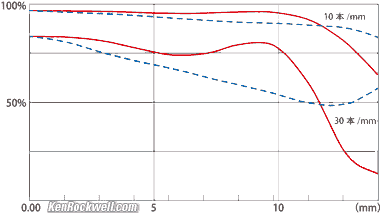
MTF at 11mm at f/2.8.
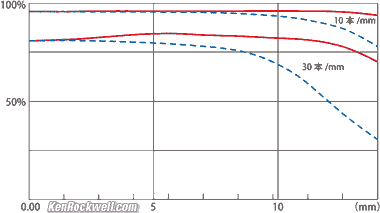
MTF at 20mm at f/2.8.
Spherochromatism performance top
I see no spherochromatism.
Spherochromatism, misnamed "color bokeh" by laymen, is when out-of-focus highlights take on color fringes. Out-of-focus highlights have no color fringes.
Spherochromatism is a completely different aberration from lateral color fringes.
Sunstars performance top
With its 9-bladed diaphragm, this Tokina 11-20mm f/2.8 makes reasonable 18-pointed sunstars on brilliant points of light at the smallest apertures:
At 20mm at f/22. bigger.
The rounded diaphragm of this Tokina makes blurrier sunstars at apertures of f/5.6 and wider. See a sample at f/8 at Flare.
Compared top
Sample Images Intro Specs Performance
Versus other Tokina ultrawides
The older Tokina 11-16mm f/2.8 II (2012-) and Tokina 11-16mm f/2.8 (2007-2012) only go to 16mm. This newest 11-20mm goes to 20mm.
Since they cost the same, there's no reason to get the older lenses.
Versus the Nikon DX ultrawides
The Nikon 10-24mm DX (2009-) and original Nikon 12-24mm DX (2003-) both have instant manual-focus override, lacking on the Tokinas.
This Tokina is a professional f/2.8, much better for use in dim light, and giving brighter viewfinder images, than any Nikon DX ultrawide.
This Tokina is built much tougher than either Nikon DX ultrawide. The 10-24mm Nikon is offshored to China and made of almost 100% plastic, while this Tokina is made mostly of metal.
The Nikon lenses go to 24mm, but are a stop slower.
Optically all of these are excellent.
Versus the Canon EF-s ultrawides
The Canon 10-18mm EF-s (2012-) and Canon 10-22mm EF-s (2004-) both have instant manual-focus override, lacking on the Tokinas.
This Tokina is a professional f/2.8, much better for use in dim light, and giving brighter viewfinder images, than any Canon EF-s ultrawide.
This Tokina is built much tougher than either Canon EF-s ultrawide. The 10-18mm is optically superb, but made of 100% plastic. This Tokina is made mostly of metal.
Optically all of these are excellent.
Seeing how the optically superb Canon 10-18mm EF-s sells for half the price of this Tokina, for Canon, I'd get the Canon 10-18mm.
Recommendations top
Sample Images Intro Specs Performance
For Nikon
The Nikon 10-24mm DX (2009-) and Nikon 12-24mm DX (2003-) offer instant manual focus override and standard 77mm filters.
This Tokina is bigger (82mm filters) and tougher.
This Tokina is a stop faster, making it much much better for use in dim light and always giving a brighter finder image.
If price didn't matter, I'd get the Nikon 10-24mm DX if I wanted a lighter lens for travel, and get the Tokina if I wanted speed for low-light, or a better-built lens.
If money matters, there's no question: get this Tokina and forget about the Nikon DX ultrawides. This Tokina works at least as well as Nikon's lenses, it's better made, it's twice as fast, and costs less. Duh.
For Canon
The Canon 10-18mm EF-s (2012-) is an optically near-perfect lens, has instant manual focus override missing on this Tokina, and sells for half the price. If you shoot Canon, get the Canon 10-18mm.
The Canon 10-22mm EF-s (2004-) isn't as good optically. It's a much older design, but it does have instant manual-focus override.
The Canons takes standard 77mm filters, while this Tokina takes an extra-large 82mm filter.
This Tokina is tougher than either of the Canons.
For Canon, the latest Canon 10-18mm is the best lens, unless you prefer to pay more for more weight and mechanical toughness, and/or prefer the greater speed (f/2.8) of the Tokina.
All Brands
Don't get the older Tokina 11-16mm f/2.8 (2007-2012) or Tokina 11-16mm f/2.8 II (2012-2015); this new lens replaces them for the same price and has a broader zoom range.
DO NOT buy this lens from anyplace, especially your local retail store, unless it's on my list of approved sources, because Tokina doesn't seal its boxes in any way. If you risk buying at retail or from another online source, you'll have no way of knowing how many people have already played with your "new" lens, or if it's used, returned, incomplete or damaged. I use the sources I do because they ship from secure remote warehouses where no customers or salesmen can get their sticky hands on your new lens before you do. Approved sources have the best prices, service, return policies and selection, which is why I've been buying from most of them since the 1970s.
This all-content, junk-free website's biggest source of support is when you get yours via these links to it at Adorama, at Amazon or at B&H. When you use those or any of these links to approved sources when you get anything, regardless of the country in which you live, it helps me keep adding to this free website — but I receive nothing for my efforts if you risk buying elsewhere.
Thanks for helping me help you!
Ken.
More Information top
Sample Images Intro Specs Performance
Tokina's USA page on the 11-20/2.8
Tokina's Japanese page on the 11-20/2.8
© Ken Rockwell. All rights reserved. Tous droits réservés. Alle Rechte vorbehalten.
Help me help you top
I support my growing family through this website, as crazy as it might seem.
The biggest help is when you use any of these links to approved sources when you get anything, regardless of the country in which you live. It costs you nothing, and is this site's, and thus my family's, biggest source of support. These places have the best prices and service, which is why I've used them since before this website existed. I recommend them all personally.
If you find this page as helpful as a book you might have had to buy or a workshop you may have had to take, feel free to help me continue helping everyone.
If you've gotten your gear through one of my links or helped otherwise, you're family. It's great people like you who allow me to keep adding to this site full-time. Thanks!
If you haven't helped yet, please do, and consider helping me with a gift of $5.00.
As this page is copyrighted and formally registered, it is unlawful to make copies, especially in the form of printouts for personal use. If you wish to make a printout for personal use, you are granted one-time permission only if you PayPal me $5.00 per printout or part thereof. Thank you!
Thanks for reading!
Mr. & Mrs. Ken Rockwell, Ryan and Katie.
Home Donate New Search Gallery Reviews How-To Books Links Workshops About Contact

